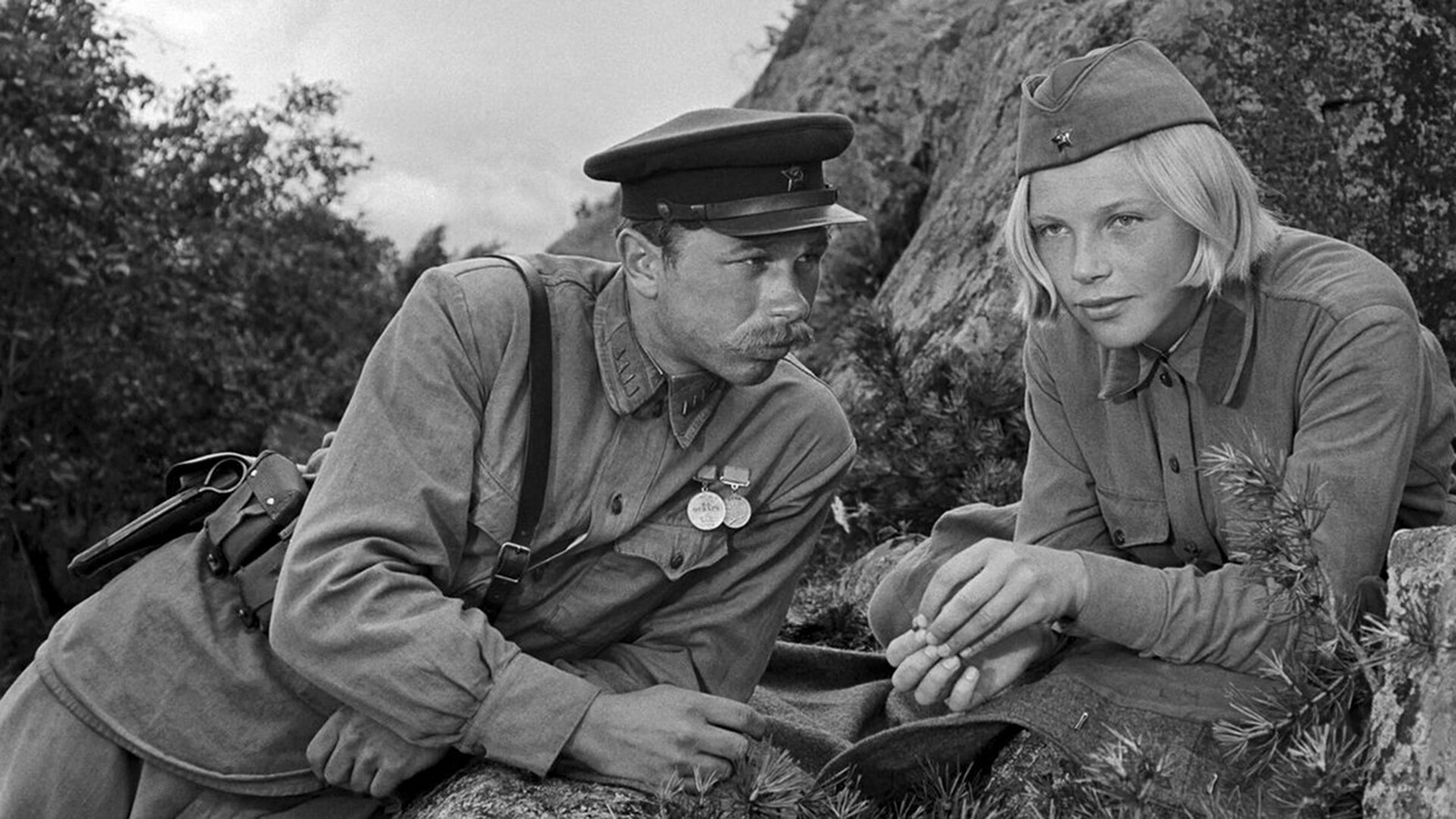
A still from ‘The Dawns Here Are Quiet’ (1972).
Stanislav Rostotsky/Gorky Film Studio, 1972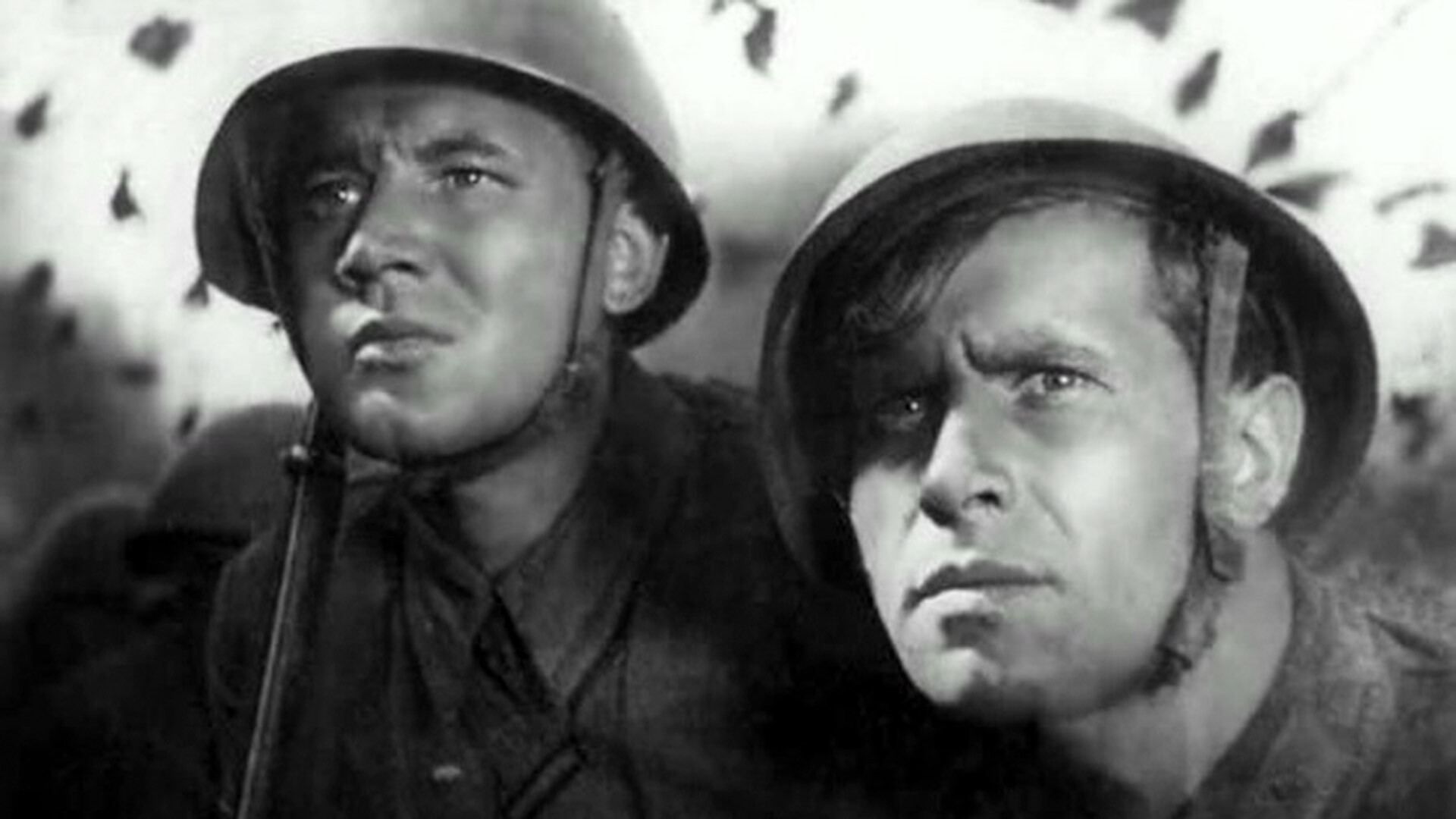
Besieged Leningrad (now St. Petersburg), 1941. Arkady and Boris are both soldiers and close friends. It seems that nothing can destroy their strong friendship, but, one day, a black cat runs between the comrades…
The movie was shot in 1943 at the height of the war. The siege of the city had not yet been lifted and the shooting took place in Central Asia after evacuation there. The song ‘Dark Night’ was written especially for the movie, which was performed by actor Mark Bernes (Arkady) and became truly iconic in the USSR.
Director Leonid Lukov said of his creation: "In the picture ‘Two Soldiers’, the main thing was not the plot and not external circumstances, but the people at war. Everything is important: how they fight, how they yearn for home, how they love a wonderful woman, how they dream of the future… I wanted to hear in the howling of mines and exploding shells, the beat of a simple human heart, to overhear soldiers' thoughts, I wanted to speak the language of ordinary people on the screen, sing their songs, to show that high and honest feeling of the Soviet patriot, which leads us to the immortal victory over the enemy!"
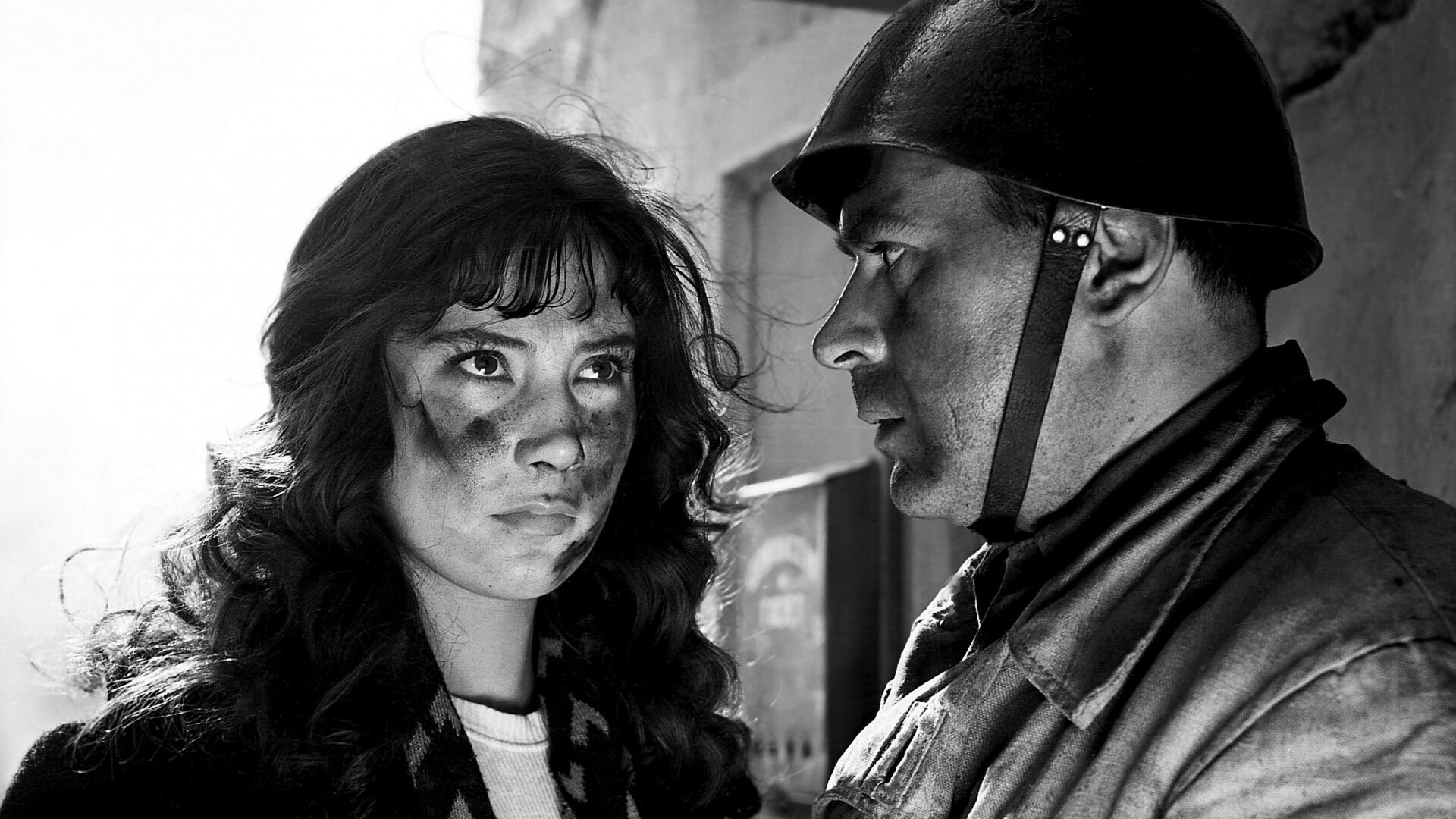
Moscow, 1941. Boris and Veronika are going to get married and it seems that a bright and beautiful future awaits them. However, the war suddenly destroys all their plans and life becomes a real test of feelings and emotions.
Actors did not spare themselves during filming. Performing the role of Veronica, Tatiana Samoilova fell ill with tuberculosis, but did not interrupt the work, whileAlexei Batalov, who played Boris, even landed on an operating table with a serious facial injury. Luckily, thanks to the professionalism of the surgeons, everything went safely.
‘Cranes Are Flying’ became the only Soviet feature film to be awarded the Palme d'Or at the Cannes Film Festival.
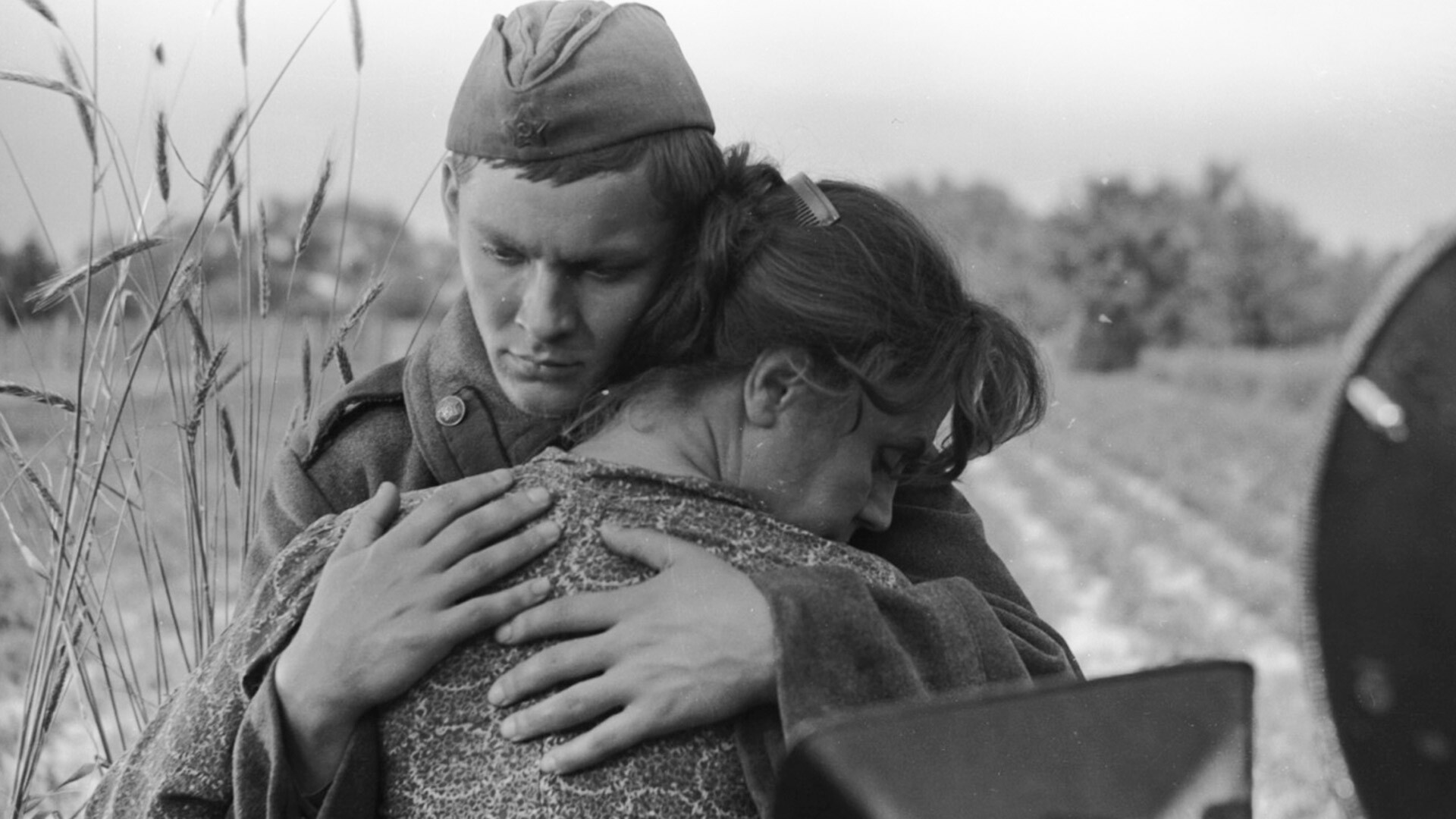
Private Alexei Skvortsov destroys two German tanks with an anti-tank gun and command allows him to go home to see his mother as a reward. The movie tells about this difficult trip and, at the very beginning of the movie, the narrator informs the viewer that the soldier did not live to see the Victory.
‘Ballad of a Soldier’ was a great success both in the Soviet Union and abroad. The movie was awarded a special jury prize at the Cannes Film Festival and was also nominated for an Oscar in the ‘Best Original Screenplay’ category.
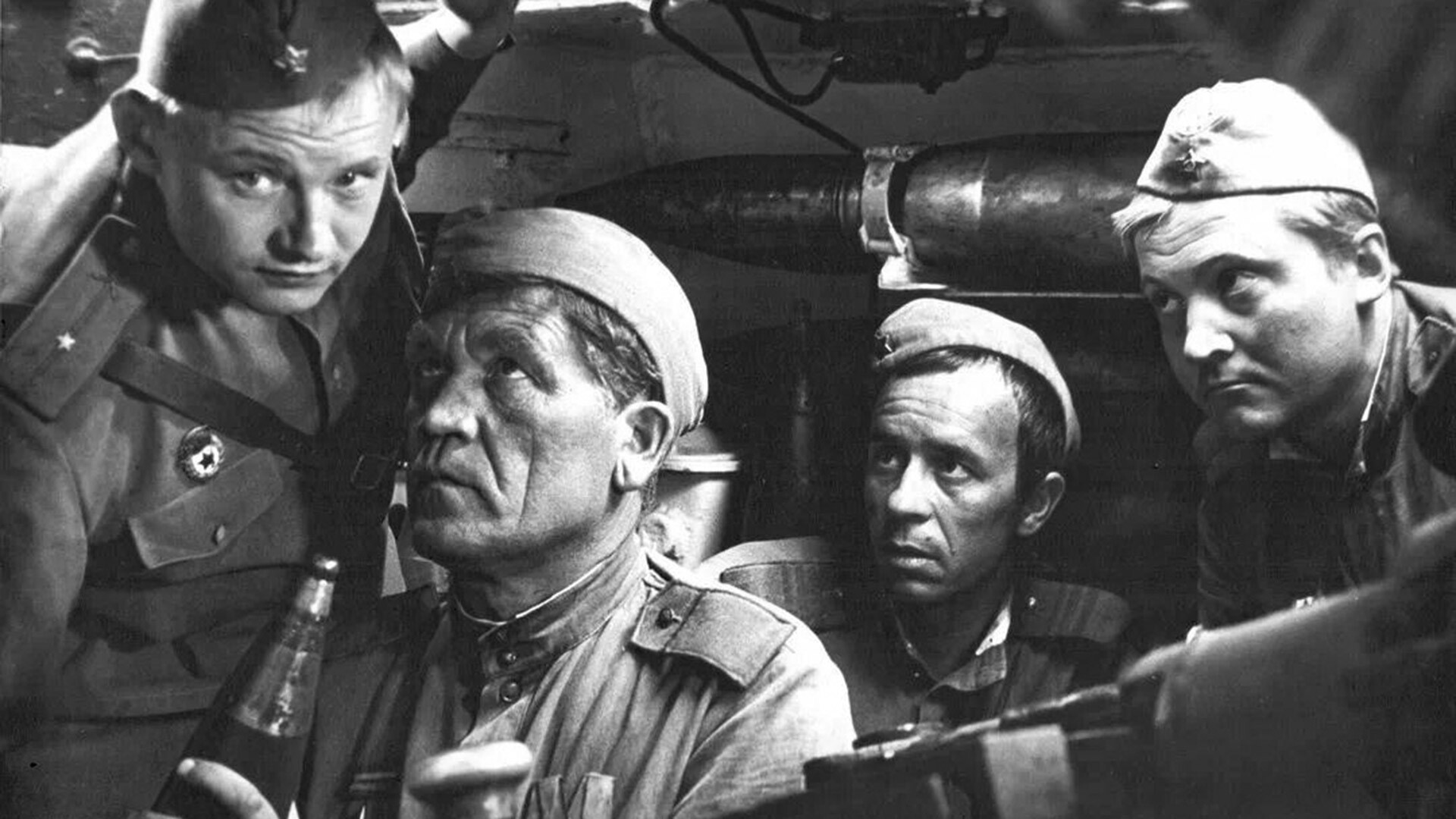
1944. Junior Lieutenant Alexander Maleshkin, head of a SU-100 self propelled gun unit, participates in various battles to liberate East Ukraine. The commander is younger and less experienced than his subordinates and constantly has to prove that he is worthy to lead his men into battle.
The movie was shot near the Czechoslovakian border in 1968 with the involvement of the troops of the Carpathian Military District. At that time, the turbulent events of the ‘Prague Spring’ were taking place.
After troops organized by the Warsaw Pact entered Czechoslovakia, the British media claimed that the Russians were using the filming of the movie as cover, in order to secretly concentrate large tank formations on the border with this country.
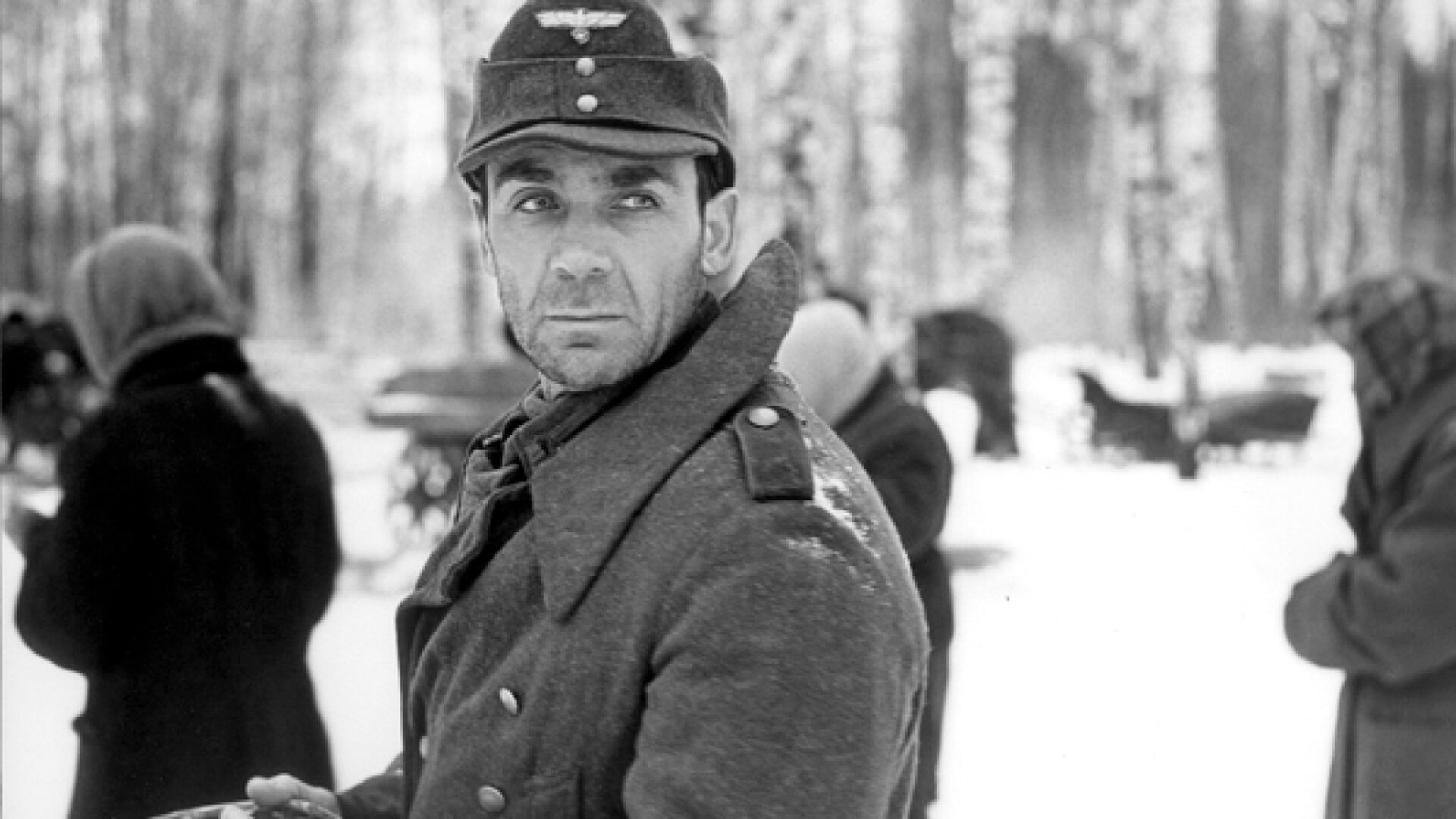
Nazi-occupied Pskov region, 1942. Former collaborator Alexander Lazarev joins the local partisan detachment. He wants to atone for his betrayal with blood…
The movie was shot in 1971, but censorship did not allow it to be widely distributed for 15 years. Officials accused director Alexei German of deheroizing the partisan movement, distorting "the image of heroic times" and "the image of the Soviet people".
Only in 1986, during perestroika, did ‘Trial on the Road’ finally reach audiences.
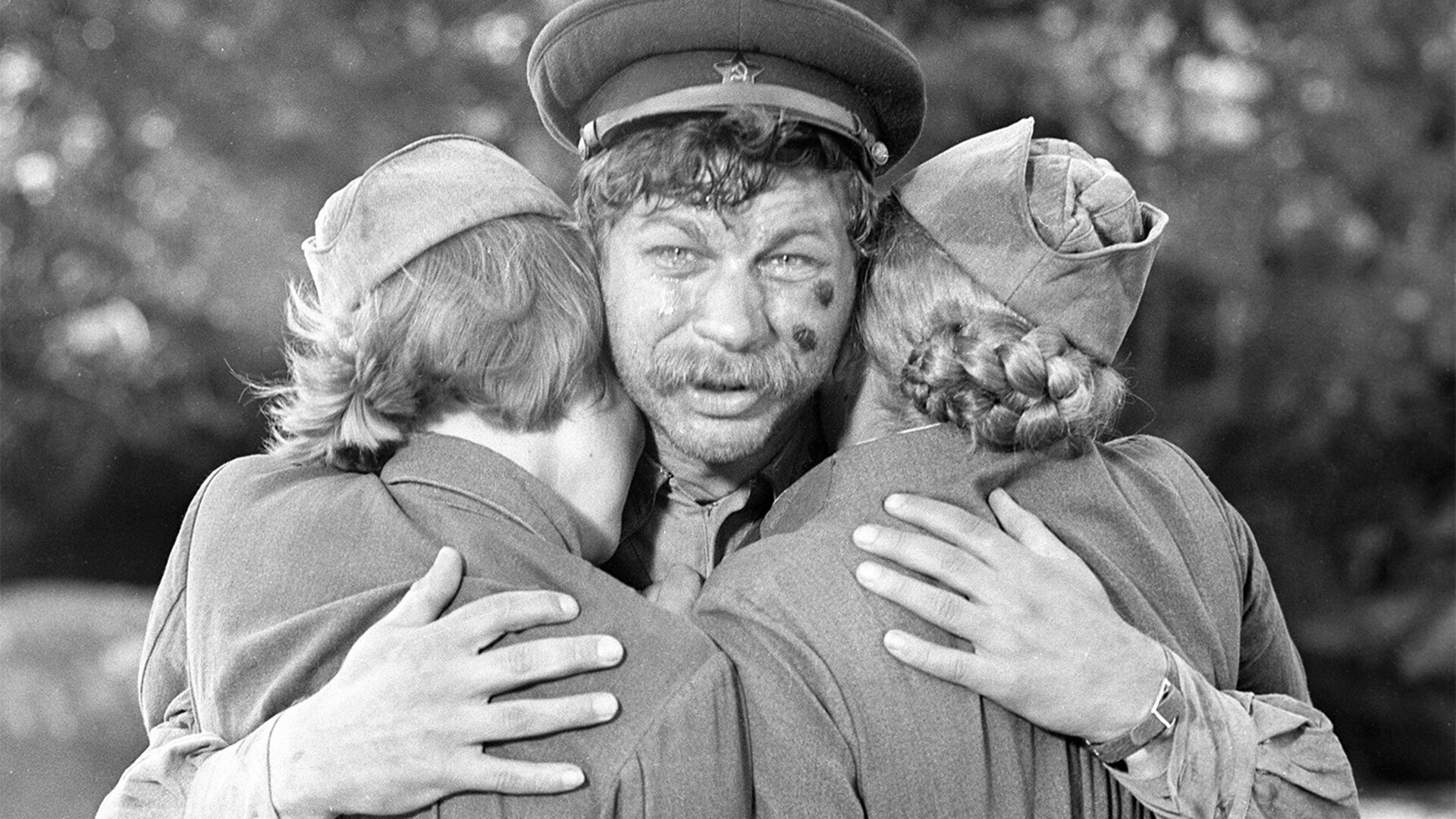
Karelia, 1942. In the deep rear of the Soviet army, female anti-aircraft gunners are serving under the command of Petty Officer Fedot Vaskov. Suddenly, a platoon of German saboteurs appears nearby. Vaskov and his fragile subordinates have to hold off the enemy until reinforcements arrive.
The movie, based on the novel of the same name by Boris Vasilyev, became very popular in China. There, the story was even included in the compulsory school curriculum.
In 2005, in honor of the 60th Victory Day anniversary, Russia and China jointly filmed a 19-part TV series also called ‘The Dawns Here Are Quiet’. Ten years later, in 2015, the Chinese staged an opera based on the iconic work, while director Renat Davletyarov successfully filmed a remake.
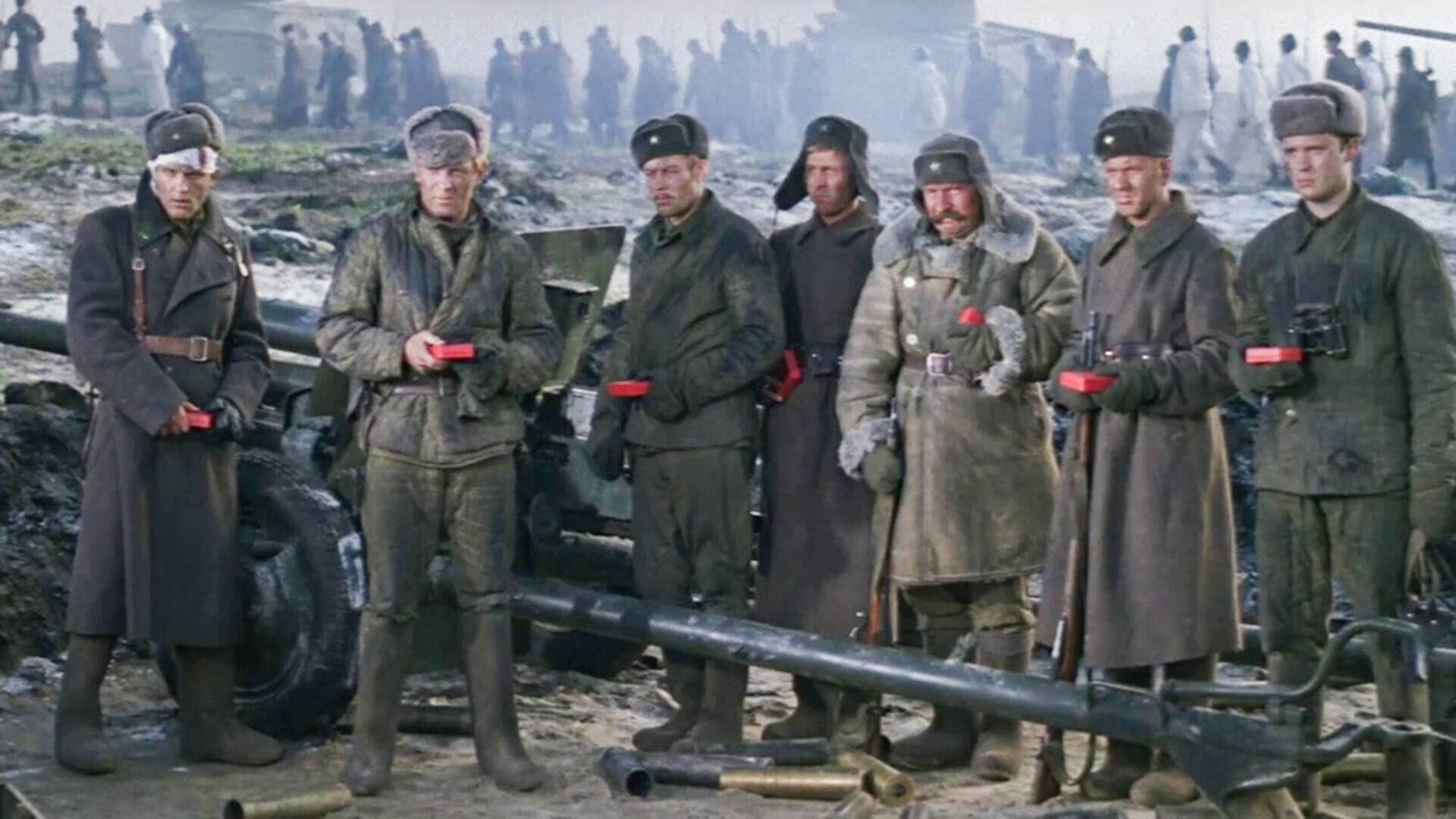
South of the Soviet Union, December 1942. A large group under the command of General Friedrich Paulus is surrounded in Stalingrad. The Nazis begin the ‘Operation Winter Storm’ to break through the encirclement ring and the Soviet troops have to stand to the death to prevent the enemy from reaching the city.
It was decided to shoot a movie based on the novel of the same name by Yuri Bondarev near Novosibirsk – the local military promised to provide small arms of the time, as well as sheepskin coats and ‘valenki’ felt boots.
The Siberian winter turned out to be extremely harsh. "It was minus 40°C, very strong wind. We got frostbite on our faces, hands and feet. Makeup artists were crying, because they had to put makeup on faces that were badly burned by frost. So the snow was really hot for us," recalled actor Boris Tokarev.
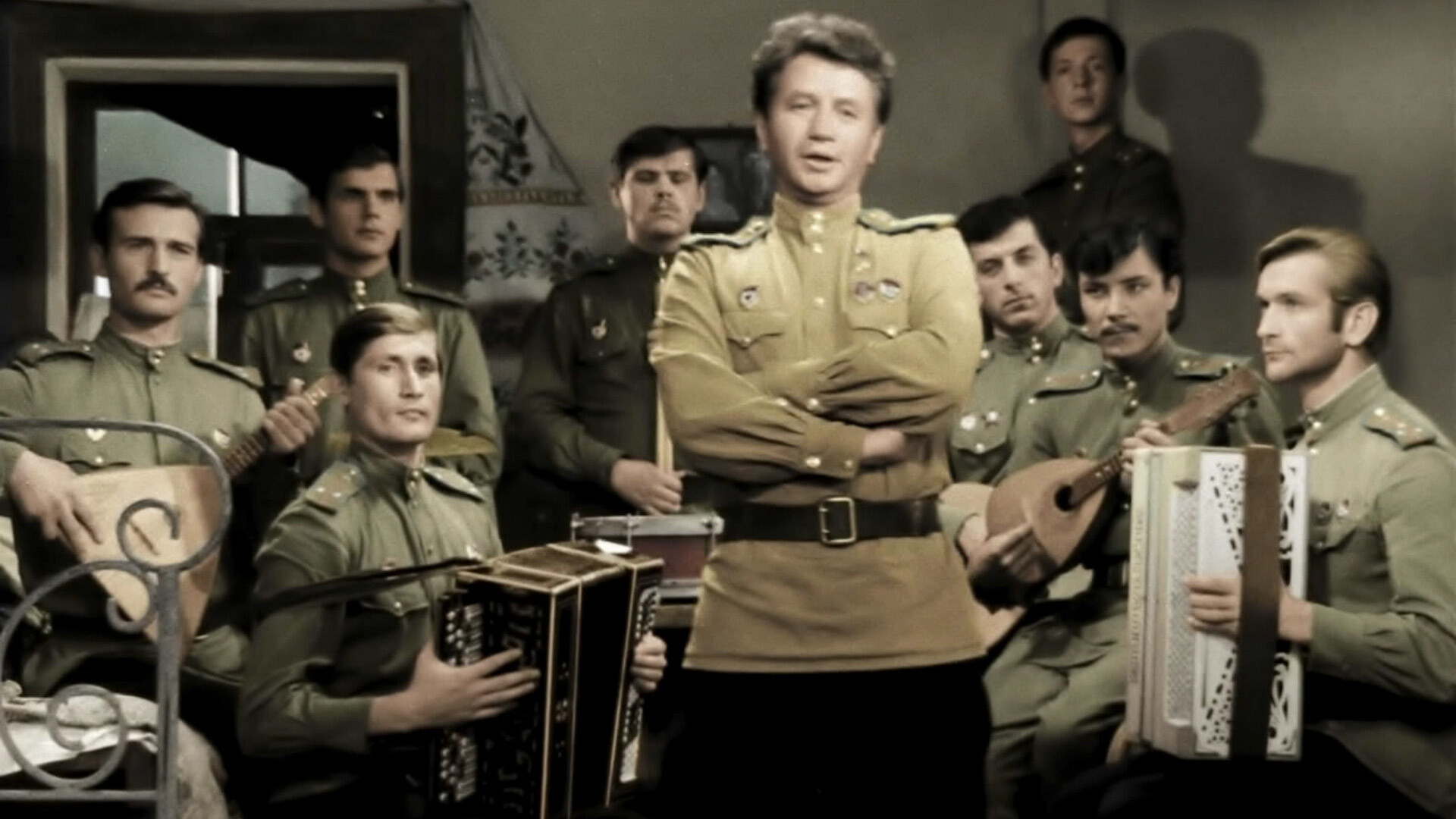
The ‘Battle of the Dnieper’, Summer of 1943. Fighter pilots under the leadership of Captain of the Guard Alexei Titarenko, nicknamed ‘Maestro’, are desperately fighting the enemy and, during the rare moments of rest, self-consciously engaged in making music.
This movie also almost fell victim to censorship – Soviet authorities did not like this "unheroic" story with light-hearted songs. But then, Soviet ace, Marshal of aviation, three-time ‘Hero of the Soviet Union’ Alexander Pokryshkin came to the rescue.
He settled any problems with bureaucracy and provided the film crew with four training Yak-18s, mocked up as Soviet fighters, as well as a Czechoslovakian ‘Zlin’ Z-326, which played the role of a German ‘Messerschmitt’.
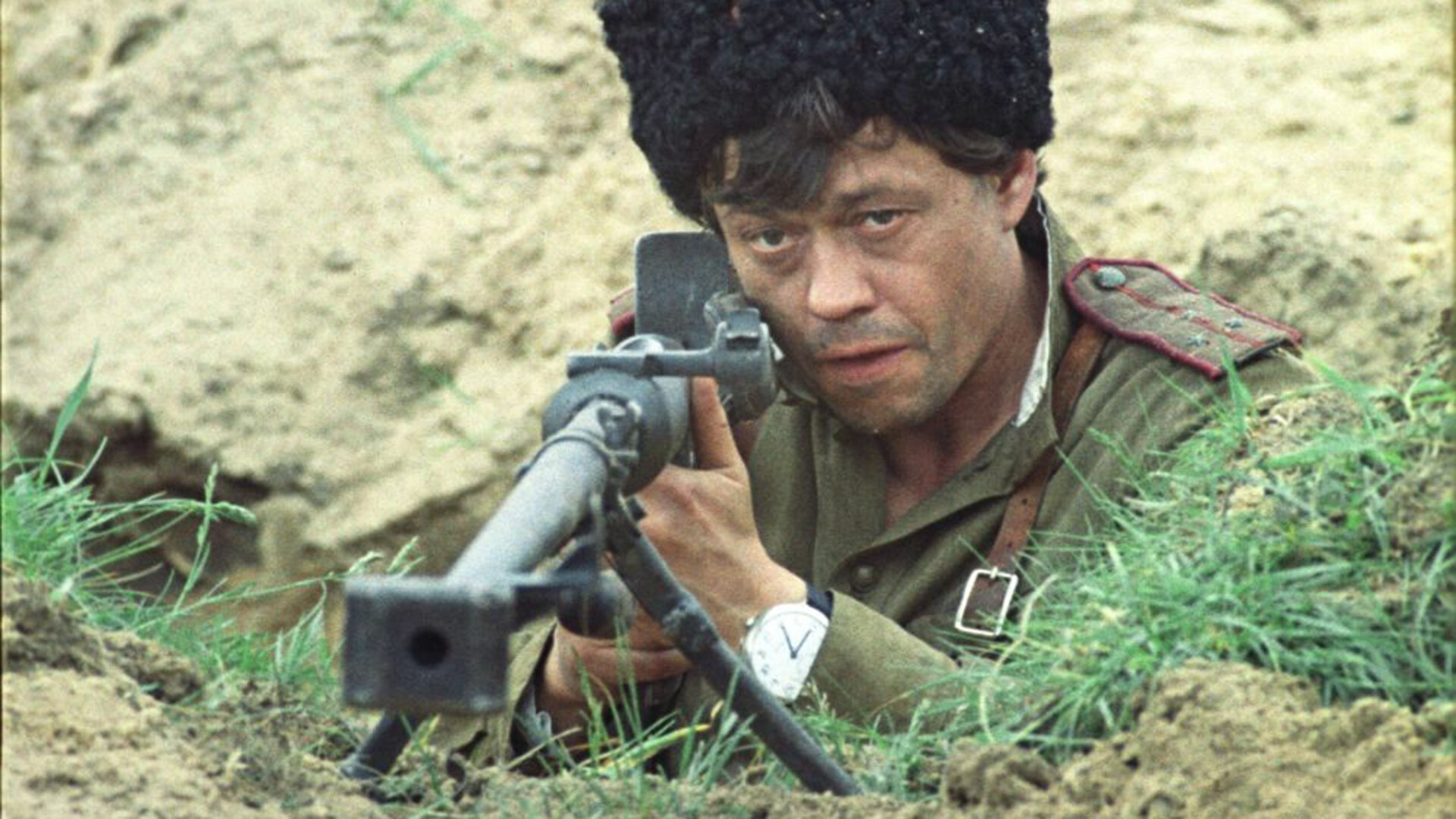
During the ‘Battle for the Dnieper’, Soviet troops courageously cross the water barrier and try to gain a foothold on the opposite bank. Two rifle battalions desperately hold the bridgeheads, hoping for the promised fire support of their artillery. But, the command then suddenly changes its plans and there is no one left to provide this support to them…
The movie is based on the novel of the same name by Yuri Bondarev. The author was an artillery officer, who took part in the crossing of the Dnieper, so he knew about those events firsthand.

The movie, striking in its realism, tells about Nazi atrocities in occupied Byelorussian SSR in 1943. At the center of the story is a teenager named Flera, who, throughout the movie, literally turns gray from the horror he witnesses.
Initially, director Elem Klimov was going to film ‘Kill Hitler’ (as they wanted to call the movie) back in 1977, but faced stiff opposition from the censors. Having read the script, they found it to have "remorse", a "non-class approach" and even "propaganda of the aesthetics of filth".
The officials did not like the excessive "realism" and the fact that the guerrillas "are shown dirty, extremely wretched, often deprived of their human form". Permission to film was, therefore, not granted and the director was only able to realize his project seven years later, on the 40th anniversary of Victory Day.
If using any of Russia Beyond's content, partly or in full, always provide an active hyperlink to the original material.
Subscribe
to our newsletter!
Get the week's best stories straight to your inbox